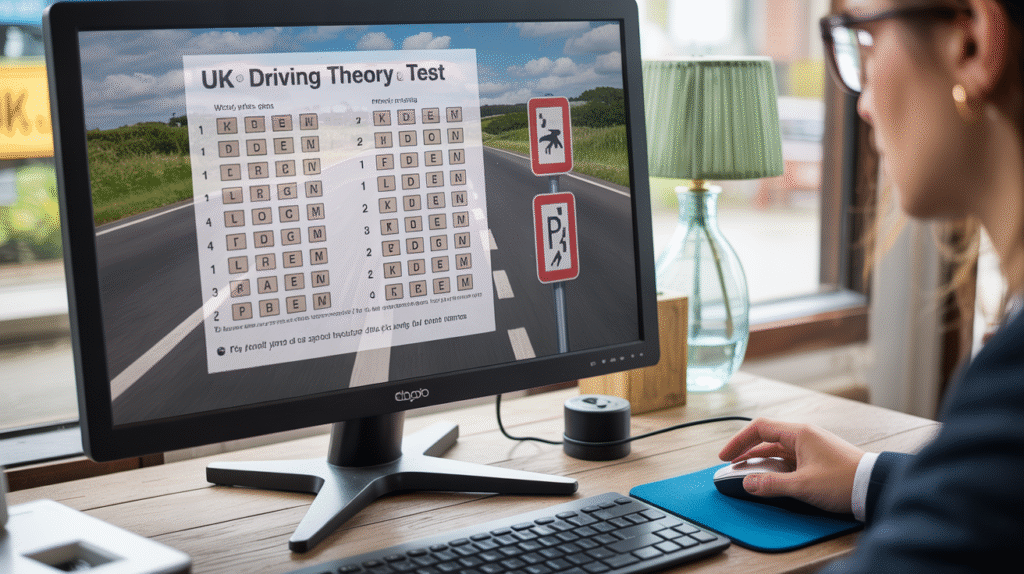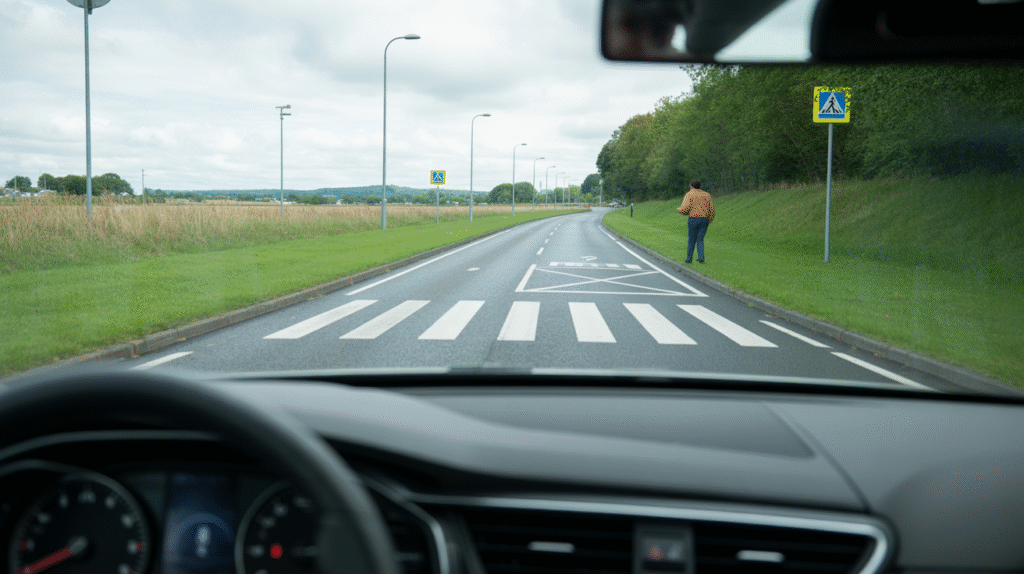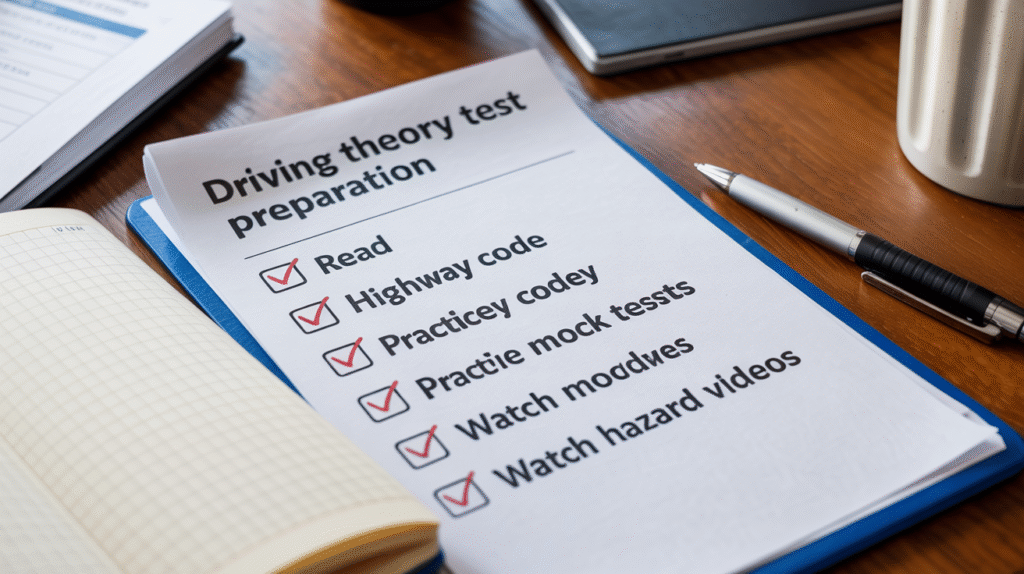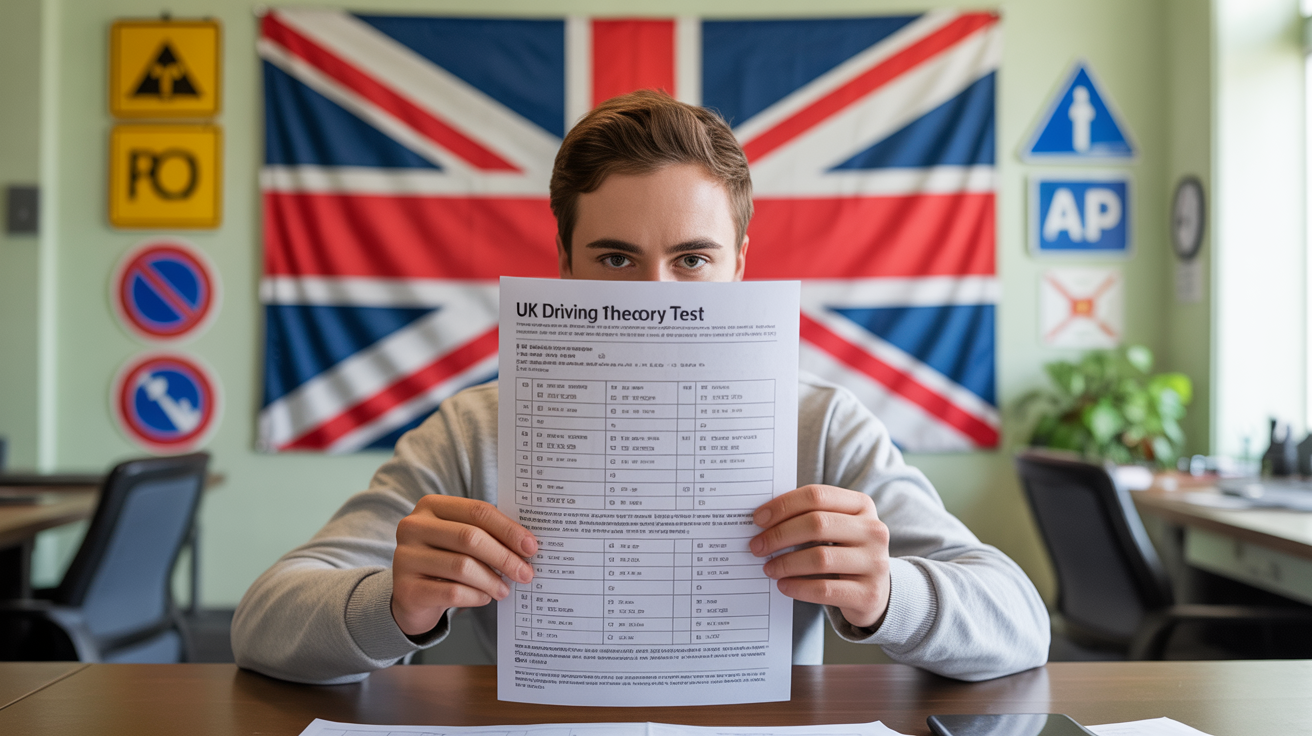Before you can take your practical driving test in the UK, you first need to pass the driving theory test online. This test checks your understanding of road rules, safety, and how to deal with different driving situations. It helps you become a safe and responsible driver, not just someone who knows how to move a car.
The theory test is made up of two parts. The first part is multiple choice questions. You will be asked questions about the Highway Code, traffic signs, and driving situations. You’ll need to choose the correct answer from the options given. The second part is called the hazard perception test. In this part, you watch short video clips and click when you see a developing hazard. This checks how well you can spot dangers on the road.
You must pass both parts of the test to get a full pass. If you pass one part but fail the other, you will need to take the whole test again.
Most people who want a car or motorcycle licence in the UK must take the theory test. You need to do it before you can book the practical driving test. If you already have a licence from another country, you might be able to skip the theory test, depending on the rules for your country. But if you’re starting fresh in the UK, then yes, this test is for you.
The cost of the theory test for a car is £23. You can book your test on the official GOV.UK website. It’s quick and simple to book online, and you can choose a test centre near you. Make sure you book through the official site to avoid extra fees from third-party websites.
What’s Inside the Theory Test?

The UK driving theory test is made up of two main parts – the multiple choice questions and the hazard perception test. You need to pass both sections to get a full pass. These two parts are designed to check how well you understand the rules of the road and how good you are at spotting dangers while driving your car.
Multiple Choice Questions
This is the first part of the test. You’ll sit at a computer and answer 50 questions. These questions are based on things like the Highway Code, UK traffic laws, road signs, and general driving rules. Some questions will be about everyday driving situations, and others will ask you about things like safety distances, stopping times, and signs you might see on the road.
To pass this section, you need to get at least 43 out of 50 questions right. You’ll have 57 minutes to complete this part, which gives you just over a minute per question. You can flag any questions you are not sure about and come back to them before you finish.
Most of the questions are single-answer, but some questions might have more than one correct answer. Some questions are part of a short case study that shows a real-life driving situation. Then you’ll answer questions based on that.
Hazard Perception Test

Once you finish the multiple choice part, you’ll move on to the hazard perception section. This part tests how quickly you can spot things that might turn into dangers while driving.
You’ll watch 14 video clips, each about one minute long. These clips show everyday driving scenes, like driving on a road, in the countryside, or in town. In each clip, you must click your mouse when you see a developing hazard. A developing hazard is something that may cause you to slow down, change direction, or stop. It could be a car pulling out, a pedestrian stepping onto the road, or a cyclist getting too close.
One of the clips has two developing hazards, and the rest have one. The earlier you click when you see the hazard starting to develop, the more points you get. The highest score for each hazard is 5 points, and the pass mark for this part is 44 out of 75.
You don’t lose marks for wrong clicks, but if you click too often or in a pattern, the system may think you’re guessing and give you zero for that clip. So it’s important to stay calm and click only when you really see a possible danger.
Both parts of the test are done on the same day, one after the other. If you pass both, you’ll get a pass certificate number that you need when booking your practical test.
How to Prepare for the Test

Getting ready for the UK driving theory test takes time, but if you follow the right steps, it becomes easier. Good preparation helps you feel confident and gives you a better chance to pass the test on your first try. Here’s how you can start your study plan.
Start with the Highway Code
The Highway Code is the most important book you need to read. It covers all the rules of the road in the UK. It explains how to drive safely, how to follow traffic signs, and what to do in different situations. Almost all the questions in the multiple choice part of the theory test are based on this book.
You can read it online for free on the official government website. It’s best to go through it slowly, section by section. Make short notes or highlight parts you find difficult. You can find the Highway Code here: https://www.gov.uk/guidance/the-highway-code
Learn All Road Signs and Meanings
Road signs are a big part of both the theory test and real-life driving. There are warning signs, speed limit signs, direction signs, and many more. You need to know what each sign means and how to react when you see it.
Try to group the signs by shape or color. For example, triangle signs are warnings, while circle signs are orders. Look at pictures of the signs every day, and try to test yourself by covering the meanings and guessing them. There are apps and websites that offer free road sign quizzes to help you practice.
Understand UK Traffic Laws and Safety Rules
It’s not enough to just know the signs. You also need to understand the basic traffic laws and safety rules. This includes things like right of way at junctions, how to use roundabouts, how to park safely, and what to do in case of an accident.
Pay attention to safety distances, speed limits in different areas, and rules about using your phone while driving. These are topics that show up often in the test. Try to relate the laws to real-life driving situations so they are easier to remember.
Tips to Remember Key Points
Some people find it hard to remember all the information. Here are a few simple ways to help:
– Study in short sessions, like 20–30 minutes at a time.
– Use flashcards to remember signs and important rules.
– Take notes in your own words to make things clearer.
– Teach what you’ve learned to a friend or family member. Explaining helps you remember better.
– Practice every day, even if it’s just a little.
The more you go over the material, the more confident you’ll feel. The goal is not just to pass the test but to understand how to stay safe on the road.
Final Tips to Boost Your Confidence
As your test day gets closer, it’s normal to feel a bit nervous. But if you’ve prepared well, there’s nothing to worry about. A few simple habits can help you stay focused and confident when it matters most. Here are some final tips that can make a big difference.
Create a Revision Schedule
Don’t try to study everything in one or two days. It’s better to plan your study time and revise a little every day. Make a simple revision schedule that fits your daily routine. For example, you can choose to study road signs on Monday, traffic rules on Tuesday, hazard perception on Wednesday, and so on.
Spread your revision over a few weeks instead of rushing at the last minute. This helps your brain remember the information better and gives you enough time to understand difficult topics.
Study in Short Sessions
You don’t need to study for hours to do well. In fact, shorter sessions are often more effective. Try to study for 20 to 30 minutes at a time, then take a short break. This way, you stay fresh and focused.
Use a mix of methods to keep it interesting. Read the Highway Code, watch short videos, take quizzes, or use flashcards. Changing your study method keeps your brain active and helps you avoid getting bored.
Stay Calm and Rested Before Test Day
The night before your theory test, try to relax. Don’t try to cram everything at the last moment. A good night’s sleep is more helpful than late-night study. On test day, eat something light, leave early, and make sure you know where your test centre is.
Take a deep breath before the test begins. Remind yourself that you’ve prepared well. Don’t rush through the questions. If you stay calm and read carefully, you’ll have a better chance of choosing the right answers.
Conclusion
Passing the UK driving theory test is not as hard as it may seem. With the right tools and enough practice, you can pass it on your first try. You just need to follow a clear plan, use good study materials, and stay confident.
Start by learning the Highway Code, use mock tests to check your progress, and don’t forget to practise hazard perception. If you stay consistent and focused, you will be ready for test day.
Why not try a mock test today or download a trusted theory test app? It’s the best way to see how ready you are and where you need to improve.




